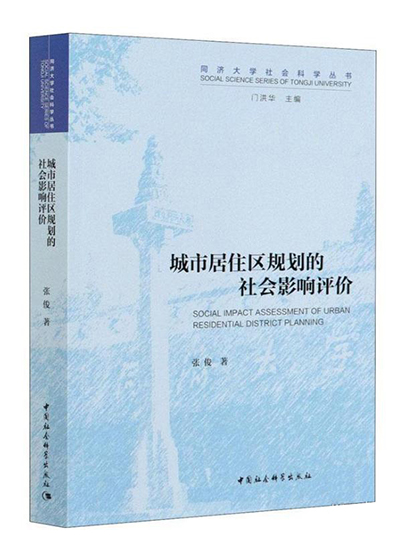Social impact of residential spatial structure in Shanghai

Social Impact Assessment of Urban Residential District Planning
Urban spatial differentiation centered on urban residential districts has been a hot topic for both domestic and international researchers of urban sociology and urban geography. This spatial phenomenon has appeared in China’s megacities after more than 20 years of market-oriented housing reforms.
Social Impact Assessment of Urban Residential District Planning, authored by Zhang Jun, an associate professor from the School of Political Science and International Relations at Tongji University, covers 7,000 or so residential communities in Shanghai, using multiple research methods such as big data analysis, questionnaires, and field surveys.
Zhang conducts comprehensive and systematic research on the relationships between urban residential planning and spatial differentiation, community identity, community participation, and community conflicts, as well as on urban residential district planning’s social impact mechanisms, evaluation models, and evaluation methods. The book attempts to provide a guide for continuously optimizing urban residential district planning strategies, innovating primary-level community governance models, and building high-quality, inclusive, and harmonious residential communities.
Different types of residential communities show different degrees of differentiation. The high degree of differentiation in low-level residential districts may lead to concentration of poverty and social exclusion, which should receive governmental and social attention. Big data referenced in the book indicates that Shanghai’s low-income residential spaces are rapidly clustering with continuous urban expansion and in-depth market-oriented housing reforms. Over the past decade, Shanghai saw a faster differentiation rate for low-level residential spaces than high-level residential spaces, and a declining differentiation degree in high-level residential spaces. Meanwhile, low-level residential districts located in city suburbs and in older, shabby downtown communities (mainly populated by migrants) demonstrate higher degrees of community identity. These low-level residential communities, under the impact of poverty reproduction mechanisms of certain dwelling environment spaces, are more likely to encounter concentrated poverty and residential social exclusion.
Urban residential district planning has a comprehensive social impact and complex internal mechanisms. The social impact of differentiated urban residential planning can be observed not merely in the social differentiation of residential spaces, but also in community identities, community participation, and community conflicts. The locations, scales, density (density of registered inhabitants, density of residential floor space, and density of living floor space), and the degree of spatial mixture, are major variable factors for residential district planning to generate social impact.
Tao Xidong is a research fellow from the Institute of Sociology at the Shanghai Academy of Social Sciences.
Edited by YANG LANLAN
